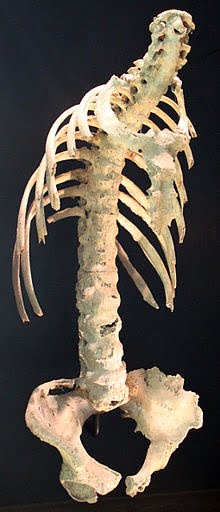Introduction of Ankylosing Spondylitis
Ankylosing spondylitis (AS) is a chronic type of arthritis primarily affecting the spine’s joints, particularly where the spine connects to the pelvis. It manifests with symptoms like eye issues, bowel problems, and persistent back pain. The condition tends to worsen over time, leading to decreased joint mobility in affected areas. While its exact cause remains uncertain, genetic and environmental factors are believed to play significant roles. Notably, more than 85% of individuals affected in the UK possess a specific genetic marker known as the HLA-B27 antigen, hinting at a genetic predisposition.

Diagnosis and Classification
AS falls under the category of seronegative spondyloarthropathies, indicating the absence of rheumatoid factor antibodies in diagnostic tests. Diagnosis relies on symptom observation, supported by medical imaging and blood tests. Although there’s no cure, management strategies aim to alleviate symptoms and may include medication, exercise, physical therapy, and in severe cases, surgery. Treatment options range from non-steroidal anti-inflammatory drugs (NSAIDs) to biologic agents targeting specific inflammatory pathways.
Symptoms and Progression
Symptoms of AS typically emerge gradually, with peak onset occurring between ages 20 and 30. Initial signs include chronic lower back pain and stiffness, often accompanied by systemic features like weight loss, fever, or fatigue. The disease may progress to involve various parts of the spine and other joints, resulting in reduced mobility and chest expansion. Complications such as anterior uveitis, cardiovascular issues, and lung fibrosis can also arise, contributing to the disease’s complexity and impact on overall health.
Pathophysiology and Genetics
The pathophysiology of AS involves systemic inflammation, with genetic factors like the HLA-B27 antigen playing a prominent role. Research suggests associations with specific genes and immune system dysregulation, although the exact mechanisms remain incompletely understood. Prostaglandin receptors and cytokines like TNF-α are implicated in the inflammatory processes underlying AS.

Diagnostic Approaches of Ankylosing Spondylitis
Diagnosing AS involves assessing clinical features such as inflammatory back pain, family history, and biomarker presence (e.g., HLA-B27). Imaging modalities like X-rays and MRI scans help visualize structural changes in affected joints. Additionally, blood parameters and genetic testing may aid in confirming the diagnosis, although early detection of non-radiographic axial spondyloarthritis remains challenging.
Treatment Strategies
Management of AS aims to control inflammation, relieve pain, and preserve joint function. Treatment regimens often involve a combination of medication, physical therapy, and lifestyle modifications. NSAIDs are commonly used to reduce pain and inflammation, while biologic agents target specific immune pathways. Physical therapy and exercise play vital roles in maintaining flexibility and strengthening affected muscles, thereby improving overall quality of life.
Prognosis and Complications
The prognosis of AS varies widely, ranging from mild disease with minimal disability to severe, debilitating forms. Complications such as spinal fusion, osteoporosis, and cardiovascular involvement can significantly impact long-term outcomes. Early diagnosis and proactive management are crucial for optimizing treatment effectiveness and minimizing disease progression.
Definition of Ankylosing Spondylitis Wikipedia
Ankylosing spondylitis is a type of arthritis that affects the spine. It causes inflammation in the joints and ligaments of the spine, which can lead to pain, stiffness, and difficulty moving. The cause of ankylosing spondylitis is unknown, but it is thought to be an autoimmune disease, which means that the body’s immune system attacks healthy tissue.
There is no cure for ankylosing spondylitis, but there are treatments that can help manage the symptoms and slow the progression of the disease. These treatments include medication, exercise, and physical therapy.
If you are concerned that you may have ankylosing spondylitis, please see a doctor for diagnosis and treatment.
Conclusion
Ankylosing spondylitis poses significant challenges due to its chronic nature and potential for complications. Despite ongoing research efforts, gaps in understanding the disease’s underlying mechanisms persist. A multidisciplinary approach involving rheumatologists, physiotherapists, and other healthcare professionals is essential for comprehensive management and improved outcomes in individuals affected by AS.
source: Wikipedia


Comments